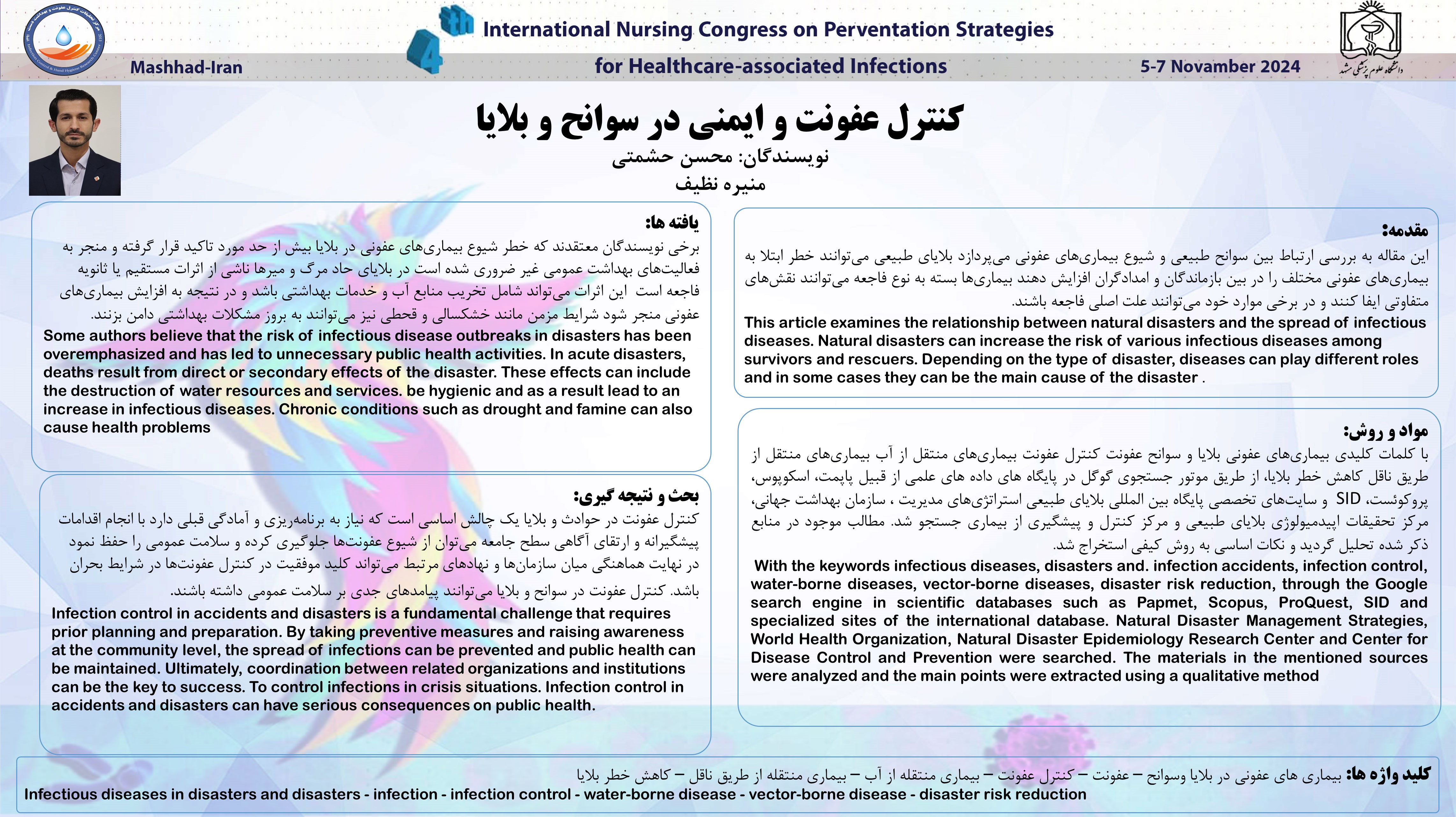کنترل عفونت و ایمنی در حوادث و بلایا
کد: G-1121
نویسندگان: محسن حشمتي ℗, منيره نظيف ©
زمان بندی: زمان بندی نشده!
دانلود: دانلود پوستر
خلاصه مقاله:
خلاصه مقاله
Introduction This article examines the relationship between natural disasters and the spread of infectious diseases. Natural disasters can increase the risk of various infectious diseases among survivors and rescuers. Depending on the type of disaster, diseases can play different roles and in some cases they can be the main cause of the disaster. . method With the keywords infectious diseases, disasters and infection accidents, infection control, water-borne diseases, vector-borne diseases, disaster risk reduction, through the Google search engine in scientific databases such as Papmet, Scopus, ProQuest, SID and specialized sites of the international database. Natural Disaster Management Strategies, World Health Organization, Natural Disaster Epidemiology Research Center and Center for Disease Control and Prevention were searched. The materials in the mentioned sources were analyzed and the main points were extracted using a qualitative method. discussion Some authors believe that the risk of infectious disease outbreaks in disasters has been overemphasized and has led to unnecessary public health activities. In acute disasters, deaths result from direct or secondary effects of the disaster. These effects can include the destruction of water resources and services. be hygienic and as a result lead to an increase in infectious diseases. Chronic conditions such as drought and famine can also cause health problems
کلمات کلیدی
بیماریهای عفونی در بلایا و سوانح ، عفونت ، کنترل عفونت ، بیماری منتقله از آب ، بیماری منتقله از طریق ناقل ، کاهش خطر بلایا- Infectious diseases in disasters and accidents, infection, infection control, water-borne disease, vector-borne disease, disaster risk reduction
